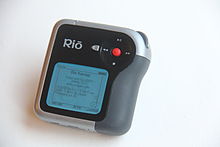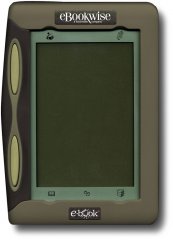Want an ebook reader but can’t stomach the prices either for the devices, the data plans, or the ebooks?
See, we all know the biggest objection to all the other devices on the market: Too expensive for a one-trick pony that you’re not even sure you like the trick anyway.
There are the lesser-known problems (until you encounter them): Kindle (could get your library taken away from you, and what if you really don’t like reading on an eInk device?). Nook (apparently shittastic all the way around—if the device can’t read EPUB, it’s an epic fail, trust me). Sony (I’ve heard various and sundry objections to this, so I’ll let you do the googling).
Then there are the people who are waiting on technology to work itself out before they pop for any device, and some of these people are waiting on the iTablet or MSCourier. They still might like to have an ebook reader, but can’t stomach the cost:limitation ratio of any current devices, so they’ll wait until technology catches up to their needs.
Now, it is true that LOTS and LOTS and LOTS of people read ebooks on their BlackBerry et al and iPhone/iTouch. It’s my opinion most people don’t want a one-trick pony device. They want a multifunction device. Why? Because *I* want a multifunction device and EVERYBODY is like me, right?
no images were found
But…since I’m a cheap bitch and don’t want to fork over for the dataplan for a smartphone, I have a one-trick pony device, and you know what? I love my one-trick pony device. Mike Cane mocks me for it, but the more devices I see rumored, debuted, trashed, complained about, the more I fall in love with my little workhorse. Worse! He sees ebooks (currently) as little more than tarted-up text files (which is true).So you know what’s so lovely about my little workhorse? It’s $90. That’s right. Know what you give up for that $90? You have to spend a little time learning A) which formats to buy for it and B) perform a few software gymnastics to get it on the device. I mean, for little more than a tarted-up text file, it’s absolutely the most perfect device ever, especially for the price.
Want a starter ebook reader that is ergonomically divine? Backlit so you can snuggle under the covers in the dark and read while staying all warm and toasty? That you can eat and read at the same time? That has a bunch of the same bells and whistles all the expensive devices do, like highlighting, notetaking, mp3 capability (audiobooks), search, long battery life, and the ability to put your own documents on it.
Get the eBookWise.
Really.
I don’t care how sophisticated it’s not. It’s a dream.
I have no connection to this company other than I love its product. I very rarely get so excited about a product and if I do, I very rarely maintain that excitement because eventually its flaws will make me pissy. I’ve had my eBookWise going on 2 years now and I love it more now than I ever did.
I swear, until such a time as A) the iTablet/MSCourier actually appears and B) ebooks cease to be little more than tarted-up text files, I see absolutely no reason to pop for anything else. I’m not anti early adopter. I’m anti early adopter of very expensive but ultimately deficient products in the very thing they are created to do.
And yes, I still have and love my Asus Eee PC, but um…it kinda sorta got appropriated by Hero, which is perfectly okay.
UPDATE: Mike Cane’s mockery continues.
 He sent me to this picture:
He sent me to this picture:

The eBookWise is the one on the far right. It is a blimp, isn’t it? That is exactly why my hands love me for using it instead of anything else (including print). It’s also why it can stand up on the table, propped against a drinking glass, to enable me to read while I’m eating.


 Way back in the day (six months ago), Penguin offered the novella “You Can Count on Me” by Roxanne St. Clair as a free PDF download you could snag from
Way back in the day (six months ago), Penguin offered the novella “You Can Count on Me” by Roxanne St. Clair as a free PDF download you could snag from 
 Had a very instructive morning, dear boys and girls. The power in my neighborhood went out for a while.
Had a very instructive morning, dear boys and girls. The power in my neighborhood went out for a while. When your bishop or your preacher or your pastor or your minister or other Protestant-type ecclesiastical leader gets up and wants everybody to flip open their Bibles, does s/he say, “Please turn to page 1436 in your Bible”? No. He says, “Romans chapter 15.” (Cause that’s where mine is. In the King James Version. What if you prefer to use a different version? No problem! Romans chapter 15 is still where it’s supposed to be, which is between Romans 14 and Romans 16.)
When your bishop or your preacher or your pastor or your minister or other Protestant-type ecclesiastical leader gets up and wants everybody to flip open their Bibles, does s/he say, “Please turn to page 1436 in your Bible”? No. He says, “Romans chapter 15.” (Cause that’s where mine is. In the King James Version. What if you prefer to use a different version? No problem! Romans chapter 15 is still where it’s supposed to be, which is between Romans 14 and Romans 16.) When your English lit professor or your director or your acting coach directs you to a certain passage in a Shakespearean play, does he say, “Please turn to Hamlet, page 783”? No. (Well, first of all, he’s OBVIOUSLY working from an anthology if it has 783 pages to begin with.) He says, “Please turn to Act 2, Scene 2, Line 35.” So what this means is I was smart and brought my little bitty Hamlet and everybody else was stupid and brought their big fat anthologies. And it makes no difference whatsoever.
When your English lit professor or your director or your acting coach directs you to a certain passage in a Shakespearean play, does he say, “Please turn to Hamlet, page 783”? No. (Well, first of all, he’s OBVIOUSLY working from an anthology if it has 783 pages to begin with.) He says, “Please turn to Act 2, Scene 2, Line 35.” So what this means is I was smart and brought my little bitty Hamlet and everybody else was stupid and brought their big fat anthologies. And it makes no difference whatsoever.

 Something that could store a library in one spot? Like my dream of a jukebox in my hand. Could it be? A library in my hand?
Something that could store a library in one spot? Like my dream of a jukebox in my hand. Could it be? A library in my hand?
